From the Mouth of the Whale Read online
Page 9
It is time to introduce a contemporary of Jónas Pálmason the Learned, a man who not only authored the natural history treatise, ‘The account of an animal which falls from the clouds in Norway and rapidly devours the inhabitants’ grass and corn to their great detriment …’, but also devoted more time to studying antiquities than any other scholar in the first half of the seventeenth century, earning himself the title of Father of Nordic Antiquarianism. He is perhaps the finest example of a seventeenth-century man of science: a polymath with an insatiable thirst for knowledge who studied most branches of human knowledge; indeed there was no area of learning in which he did not take an interest. Moreover, his work was of such importance for Icelandic literature, and he had such close dealings with Icelanders, that his name deserves to be celebrated. This man was the doctor and natural philosopher, Ole Worm.
After the University Council had announced its verdict in the case of Jónas Pálmason the Learned on Wednesday 15 April 1637, the newly acquitted troublemaker was fetched from his cell beneath the chamber in the Consistorium building and taken with all haste to the laboratory of Preceptor Worm, who had personally directed his trial. Jónas was thus given his freedom within the university’s area of jurisdiction and spared the dungeon where he should by rights have languished until Christian IV had confirmed his acquittal. Upon arrival they took the Icelander directly to the laundry. There his shackles were removed, he was forcibly deloused and de-fleaed, and finally dumped in the large cauldron which was in the normal course of things used to boil the slime and feathers off the myriad exotic animal skeletons and bird skins that Dr Worm acquired for his collection from every corner of the world. After the bath, they found the servant in the rector’s employment who most resembled Jónas in build, and this small pot-bellied person was ordered to lend the newcomer a complete suit of clean clothes. On returning home to his laboratories, the master of the house found his guest in the kitchen sitting alone over his food, though with a large audience as his stay in prison had done nothing to improve his manners. As a puerile prank they had continued to bring him dishes long after he had eaten his fill – amused at the sight of him stuffing his cheeks – for Jónas, who knew no moderation after months of incarceration, fell ravenously upon everything that was laid before him. It was evident to Worm that he would burst if things carried on this way. And so the first encounter between the self-taught Jónas Pálmason and the academic Ole Worm was rather more intimate than the latter had intended. He ordered the suffering man to be taken to the very clinic in which he examined and cured the leading members of Copenhagen society, and when it became apparent that the patient’s banquet would not budge, the doctor administered both emetic and enema. As a result of these vigorous purges, the rotund servant was required to lend Jónas a second suit of clothes, and with the renewed onset of Jónas’s hunger pangs he was brought more food, though this time the meal was conducted under the watchful eye of the physician.
Early next morning Jónas the Learned was summoned to Ole Worm’s study, where he discovered that it was not from benevolence alone that he had been spared a longer sojourn in the Blue Tower. He had no sooner taken a seat facing his benefactor than the latter began to grill him on the most unrelated of topics, though principally on runes and other heathen lore in the sagas of the ancient Icelanders: ‘Tell me about the mound dwellers’ script’, ‘Who was Bragi?’, ‘What does futhark mean?’ Jónas grew nervous and feigned ignorance, pretending not to understand the questions even when Worm spoke in Danish, or else answered at random ‘oh’ and ‘er’, and sometimes ‘well’. This shilly-shallying lasted until noon, when a man was sent out to fetch Reverend Pálmi Gudmundur, who explained to his father that Worm’s interest in the heathen past was purely scholarly and that nothing he spoke of within the university walls would be used against him. Jónas was not entirely convinced. But Reverend Pálmi Gudmundur had also brought along Jónas’s belongings: his paints, knives, books and papers – and the Great Auk that he had been feeding over the winter. The collector was delighted to receive a living specimen of this fabled avian oddity and embraced the giver, kissing him repeatedly. Worm apologised to Jónas for having overwhelmed him with questions for which he was unprepared, but he had been so excited to meet the learned Icelander in the flesh that he could not contain himself. He showed Jónas the replies he had received to the numerous letters he had written to his countrymen enquiring after him, and Reverend Pálmi Gudmundur translated them from Latin for the benefit of their subject. Magnús of Laufás, for instance, had written: ‘From what I have heard, you will shortly receive a visit from the man who is the finest runic scholar among us despite the heavy sentence he has been given for sorcery – he will be travelling on Commissioner Rosenkrantz’s ship, I gather. With him at your side you will have verbal answers to the points that seem unclear in the interpretation and if you wish you can with his help “seek gold from the dung-heap of Ennius”. His name is Jónas Pálmason, called “the Learned”, and from what I have been told he is knowledgeable on many subjects.’ Jónas was standing on tiptoe by the end of the reading. The upshot was that he agreed to remain in lodging with Dr Worm, while Reverend Pálmi Gudmundur returned to prepare his defence for the imminent hearing of his own appeal.
The days now passed in discourse of runes and old Icelandic poetry. Ole Worm placed many riddles before Jónas on the Eddic and Skaldic compilations of Snorri Sturluson, which he was able to answer straight off. The previous year Worm had published a history of the runic art entitled Danica literatura antiquissima, vulgo Gothica dicta, and he now received confirmation of his suspicions that it contained much that was mistaken or obscure. But the university rector had other duties to attend to besides tapping Jónas’s wisdom, and this gave the latter the chance to observe the work in Worm’s collection of natural history and curiosities, known as the Museum Wormianum. Here the collector had assembled a vast array of organic specimens and objects related to his many fields of study: medicine, antiquarianism, philosophy, the natural history of animals, minerals and plants, and also works of art and antiquities. An elite team of the rector’s favourite students was busy cataloguing the collection, arranging the objects on shelves and in drawers, hanging them on walls or from ceiling beams, or displaying them on specially built plinths. Here Jónas set eyes for the first time on many marvels that he had hitherto only read about in books: there were large pieces of coral, ostrich eggs, lemming skins and petrified dragons’ teeth – for the collection was not only the largest of its kind in the world but unusual for being founded on the strictest scientific principles rather than the magpie fascination for glittering objects and childish glee in hoarding that tended to characterise the collections of electors and queens. Ole Worm was preparing to publish a catalogue of the museum’s curiosities, and the students were engaged in recording the names and provenance of the objects according to the curator’s careful system, as well as finding engravings of them in older scientific writings or else sketching pictures of those that had never before appeared in print. Not all the young men were equally skilled draughtsmen and as a result the illustration of the work was progressing more slowly than it should, until one of the students came upon Jónas the Learned sitting alone in the library with his paints, beguiling the time by copying the illustration of the bearded lady in a dress from Aldrovandi’s Monstrorum historia, which he naturally executed with consummate skill. He was enlisted forthwith to sketch the objects in pencil for others to finish in ink. Worm praised his museum team for their increased productivity and the quality of the drawings, and Jónas got to indulge in his favourite pastime while at the same time examining Worm’s objects and books. And so things continued until the time came to catalogue an object that was kept in a locked cabinet in the natural philosopher’s study. This precious item was borne into the museum with great ceremony, and two lancers from the royal bodyguard no less were set to guard the door. The object was about five ells long, wrapped in a cloth of scarlet velvet with th
e insignia of Christian IV embroidered on it in gold, and naturally the learned doctor saw personally to its handling and cataloguing, for he had been graciously permitted to borrow it for purposes of research from the king’s private collection. The students crowded around the long examination table to watch as Worm ran his gloved hands over the cloth, deftly drawing it back to reveal a magnificent unicorn’s horn. But this was no ordinary specimen of the shy beast’s cranial ornament, for the horn was fixed in a fragment of skull-bone. The spectators gasped: it was most unusual for any remains to be found of a unicorn besides the splendid twisted horn; other bones were extremely rare and scholars were more or less agreed that those found in museums were fake. But here was part of the forehead and crown of the beast, which could therefore be compared to the head of other cloven-hoofed creatures, for the unicorn was generally regarded as being most closely related to the ibex.
Jónas Pálmason the Learned began to laugh and could not stop. His short legs buckled under his quaking body and he dropped to the floor, where he lay hooting as if he were in tears. The students exchanged glances; they were ready for anything with Jónas, who was always mumbling to himself and blurting out non sequiturs, but this wild behaviour was both sinister and inappropriate in the presence of the rector and the royal treasure. The lifeguards, who had not encountered Jónas before but considered themselves as adept as university men at identifying lunatics, grew uneasy and tightened their grip on their lances. Everyone waited in suspense for the reaction of the learned and courteous yet severe Preceptor Worm. Leaving the table, he took up position beside the laughing man, inclined his head and frowned, holding his beard and stroking it down over his chest, as if confronted with an unusual form of malady.
After long reflection, the learned doctor straightened up and exclaimed:
‘Well, I might have known it …’
And he too was seized with uncontrollable laughter. Bending down, he extended a hand and helped Jónas to his feet, declaring between fits of mirth:
‘Of course, of course!’
Still chuckling, he ordered his assistants to wrap up the unicorn’s horn and return it to his study. When this had been done, Worm and Jónas retired there themselves, laughing together. The students mimicked their master: ‘Of course, of course!’, though ignorant, naturally, of what had prompted his exclamation. Of one thing they could be sure: their master’s roars of laughter were a sign that he had made a remarkable discovery. Worm was such an inveterate scholar that he was never more amused than when he discovered that he had been wrong.
It would perhaps be putting it too strongly to say that Rector Ole Worm, Doctor Medicinæ in Academia Hafniensi Professor Regius, had been wrong about the existence of the unicorn. In fact, he had for some time been assailed by doubts about the origin and nature of these marvellous horns. He had begun to wonder why so few people had actually set eyes on the beast in modern times; the most recent eyewitness accounts were all over a hundred years old, and there was moreover the conundrum of why nothing was ever found of their bodies apart from the horn. No one doubted the unicorn’s noble nature; it was the touchstone of piety and chastity, as was proved by the fact that only young virgins could tame its savagery, an encounter between ferocity and gentleness that had been depicted in countless paintings, drawings, jewels and wall hangings. But all the works of art that Worm had examined had one thing in common: judging by the length of the horns that he himself had measured and weighed, the unicorn was always portrayed as too small. The simple experiment of binding an accurate replica of a unicorn horn to a billy goat had proved that to carry a lengthy, twenty-pound horn would require more than just a ferocious nature: the horn would have to sprout from a broad forehead on a large head that sat in turn on a much bulkier body than anyone had ever envisaged, a fact that made the beast’s invisibility even harder to explain. Worm began to make enquiries about the origins of the horns that were known to exist in the treasuries of cathedrals and palaces. It transpired that, with the exception of the unicorn horn encased in the sceptre of Elizabeth I, the Virgin Queen of England – which she had bought from a Muscovy trader for the price of a castle – the horns were all found in places where Icelanders had studied or traded, or merely stopped for a breather on their journeys to Rome or Jerusalem. The Flemish polymath Goropius Becanus, for example, claimed that the three horns he had examined in Antwerp in the middle of the sixteenth century had all come from Iceland, and Worm was aware that before the introduction of Lutheranism to Iceland, the leading men in that country had been in the habit of sending their sons to Antwerp to study the art of business.
The learned doctor was thrilled by this news, for he had confidants on the volcanic island, old colleagues and students from the University of Copenhagen, who would be able to confirm whether their inclement homeland fostered other land animals besides field mice and Arctic foxes; whether it was possible that unicorns trod the black sand wastes to the accompaniment of rumbling volcanoes and glaciers, and, if not, whether this ivory was found among the other flotsam and jetsam from distant lands that was washed ashore on Iceland’s strands. But his old acquaintances could provide little in the way of answers. They thought it unlikely that such treasures were to be found in Iceland, at least they had never set eyes on them, and despite their repeated promises to ask this or that old fellow with a long memory, when their correspondent reminded them of the matter some months later, they had invariably forgotten all about it. In spite of the countless letters he had sent, he remained none the wiser about the possible export of unicorn horns from the colony in the north. But in addition to his importuning of Icelandic bishops, clerics and squires – his contacts were all pillars of society – Ole Worm had received permission from the Danish chancellery to perform a chemical analysis on one of the two horns in the possession of the realm. He conducted these experiments in secret as he did not wish to offend his brother-in-law and mentor, Professor Caspar Bartholinus, who in 1628 had published the book De Unicorno in which he proclaimed the healing powers of the horns which, due to their mysterious origin, were considered an efficacious remedy for epilepsy, melancholy, cramp, gout and other disorders, in addition to being an infallible antidote against snake bites and earthly poisons such as arsenic and sublimate. Various methods were used to administer the medicine, but the most common was to scrape the horn with a sharp knife and mix the resulting powder with wine which was then given to the patient to drink. In addition, it was not unknown for the thickest section at the base of the horn to be made into a cup, whose virtue was such that any unadulterated liquid poured into it would instantly be transformed into a healing draught, whereas if the drink was poisoned, a sweat would appear on the cup’s outer rim. But these precious objects were only within the means of the rich and powerful who were, after all, always falling victim to poison. Ole Worm decided to conduct experiments on these properties: in a back room belonging to the apothecary Woldenberg, he gave healthy kittens arsenic to drink until they began to stagger and bleed from their mouths and nostrils, upon which they were administered unicorn’s horn ground up in milk. They all died, as did the pigeons fed on corn soaked in chloride of mercury. But what the ever-curious Wormius did learn from his experiments with the horns was that in their internal structure and substance they resembled ivory rather than rhinoceros horn. His researches progressed no further until Jónas Pálmason the Learned set eyes on the royal treasure, a unicorn’s horn set in a fragment of skull, and sank to the floor, overcome with hilarity.
Once Jónas and Worm had recovered from their laughter and refreshed themselves with blackcurrant juice (good for the kidneys) and spiced loaf (good for the bowels), it became apparent that Jónas was no less accomplished a natural historian than he was a runic scholar, and an experienced ivory-smith into the bargain, who had been engraving pictures on whale ivory and walrus tusks ever since he was young. He revealed that the object wrapped in velvet, far from being what it purported to be, was the tusk of the savage whale known as
the narwhal, or ‘corpse whale’ because of its taste for drowned sailors, and Worm duly recorded the object in his workbook as ‘Narwhal’s Tusk’. The Icelanders had first encountered these horrid beasts when they founded a colony in Greenland around the year 1000 Anno Domini and soon began to export the tusks, labelling them as ‘unicorn horns’ according to the latest fashion. The Greenlanders and their middlemen in west Iceland grew fat on the profits of this secret commerce, which ensured the Greenlandic colony an advantageous balance of trade with foreign lands as well as laying the foundation for the wealth of the most powerful families in Iceland. The trade continued uninterrupted until the Greenlandic colony was abandoned a hundred years ago, in the year of Our Lord 1540. Narwhal tusks were now a rare commodity in the country, but people could expect to get a high price for them as long as belief in the existence of the unicorn persisted, so Dr Worm must promise not to tell his correspondents in Iceland who had spilt the beans. This promise was easily extracted. Jónas drew diagrams for Worm showing how the fish lay in the sea, wielding its tusk like a lance, and a comparison of these with the royal specimen convinced Worm that it was a narwhal skull with a tusk and nothing more. And so that day in the Museum Wormianum the unicorn’s fate was sealed: a year after his meeting with Jónas Pálmason, Ole Worm published an epoch-making article on the similarity between narwhal tusks and unicorn horns. For the next three decades the brightest luminaries of Western philosophy wrangled over the existence of the fantastic horned beast with the goat’s beard, horse’s abdomen, pig’s tail, antelope’s head and elephant’s feet, until the sceptics finally prevailed. Upon which the price of unicorn horns plummeted. This result was a remote but sweet revenge for Jónas the Learned, since many of his chief persecutors in Iceland were descended from unicorn merchants.

 The Blue Fox: A Novel
The Blue Fox: A Novel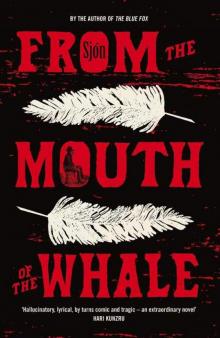 From the Mouth of the Whale
From the Mouth of the Whale The Dark Blue Winter Overcoat and Other Stories from the North
The Dark Blue Winter Overcoat and Other Stories from the North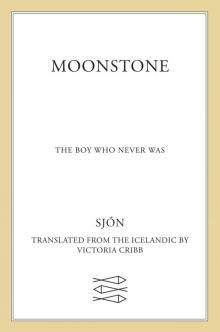 Moonstone
Moonstone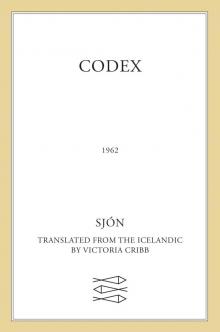 CoDex 1962
CoDex 1962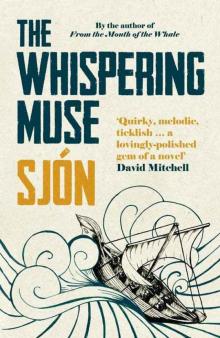 The Whispering Muse: A Novel
The Whispering Muse: A Novel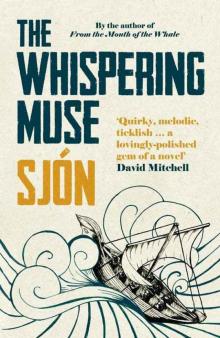 The Whispering Muse
The Whispering Muse The Blue Fox
The Blue Fox